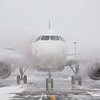When winter storms flood the forecast, the only thing that’s scarier to fliers than the idea of being stranded in an overcrowded airport is boarding a plane that might not be ready to fend off the frost. Fight your fear with a little bit of knowledge – you may be surprised to find that flying in the bitter cold is safer than you thought.
When Winter Weather Hits Hard
The first thing to know is that the Federal Aviation Administration (FAA) is extremely conscientious about airline safety. They have a huge list of detailed codes and procedural requirements that manufacturers and ground teams are duty-bound to follow. Secondly, planes are made to take on inclement weather, so if your flight is canceled it’s more likely that ground conditions or airport/airline operational concerns are the culprit versus any concerns about the plane’s capabilities.
While most weather conditions won’t scuttle your vacation plans, there are exceptions: heavy snowfall, freezing rain, and wet runways combined with wind. If the runway requires a plow or if the rain is lashing sideways, you may well be in for a delay or cancellation.

Digging into Deicing
There are three main things that influence an airplane’s ability to fly: weight, air flow, and the movement of mechanical components. In bad weather, all three can be negatively affected. That, in a nutshell, is why airlines deice. The more detailed answer lies in aerodynamics and engineering. The wings and tail of a plane are designed to interact with air currents to allow for liftoff. Anytime the shape of those components is altered by damage or the addition of debris or ice, lift is compromised, and the plane is going to struggle to get into the air and stay there.
Rather than taking a giant scraper to the plane in the same way you would attack your car’s ice-crusted windshield, deicing teams use a heated mixture of glycol and water (it apparently smells a lot like maple syrup) to wash down the entire aircraft. This procedure is often done away from the terminal at a dedicated deicing facility to keep the gate free for other planes and prevent the slippery deicing fluid from contaminating the runway. Deicing fluid contains a dye that allows the user to see exactly which area has been sprayed and which areas still need attention, but workers also use a strict application method to ensure even coverage.
Deicing fluid might be effective at getting rid of existing ice, but it doesn't do a very good job of preventing future buildup. When you’re sitting on your plane waiting to taxi and see a team of hose-wielding workers spraying the wings, that’s likely a secondary anti-icing fluid that has a lower freezing point than deicing fluid and more staying power.
Keeping the Icy Skies Friendly
Once you’re in the sky, the anti-icing fluid fades away as does the protection those glycol-rich concoctions provide. Fear not, though, as there are other safeguards in place. Planes may use rubber membranes called deicing boots, electro-thermal systems, bleed air, hydrophobic surfaces, mechanical deicers, or any combination of the above to keep ice from accumulating mid-flight.
You might never be able to fly in winter without white-knuckling your way through at least part of the flight, but at least now you know that a little snow doesn’t have to slow your roll. Thanks to the FAA and the magic of science, winter travel is safer than ever.










